 Agnieszka joined Cook Medical as the only current Critical Care (CC) sales representative in Poland in October 2016. She holds a degree in public health and a postgraduate degree in medical business management from the Medical University of Warsaw and the Warsaw School of Economics, respectively.
Agnieszka joined Cook Medical as the only current Critical Care (CC) sales representative in Poland in October 2016. She holds a degree in public health and a postgraduate degree in medical business management from the Medical University of Warsaw and the Warsaw School of Economics, respectively.
Primarily, her role is to provide education and training on, in addition to selling, CC products to physicians and other healthcare professionals in the intensive care, anaesthesia, and emergency departments of hospitals throughout Poland. Agnieszka covers all of Poland and has the opportunity to service the country’s approximately 800 hospitals.[1]
Approximately 90% of the medical device buying business in Poland, according to Agnieszka, is done through a tender service, similar to a contract, between a hospital and a medical device distributor. Most hospitals tend to renew their tender service yearly without first speaking to the hospital’s physicians about the specific order details, she said.
‘When the hospital sees that a contract is about to finish, many times, they just renew it’, she said. ‘They don’t always contact their physicians before they do it’.
There are also problems involved when a hospital signs a new tender, Agnieszka said.
‘Sometimes, when the hospital staff receives new products, they don’t know who bought it or which physicians are the intended users’, she said. ‘Physicians often don’t get asked about what they need prior to the hospital signing a tender, so it’s a big communication problem between the purchasing department and the physicians. This is an opportunity for me to bridge those communication gaps’.
Knowing this, Agnieszka said she primarily focuses on training physicians in hospitals that may not be familiar with Cook products.
‘Training is a big differentiator’, she said. ‘This is a good chance to show our support for them. Not all companies show physicians how their products are supposed to work, so it’s a good way to promote Cook and its products while creating better relationships with the hospitals’.
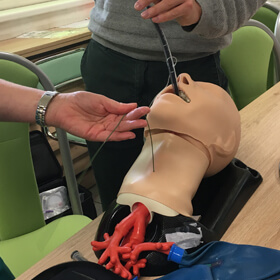 She said she mainly focuses on percutaneous tracheostomy, intubation, and extubation in her training workshops.
She said she mainly focuses on percutaneous tracheostomy, intubation, and extubation in her training workshops.
Agnieszka works in close collaboration with HAMMERmed, the local Cook distributor in Poland. They supply products all across Poland, and their partnership with CC includes the provision of customer service support, order processing, and the supply and delivery of products to hospitals throughout Poland.
‘When I’m in a hospital, I promote the products and give the hospital substantial support, including all of the information that tells them where they can purchase Cook products’, she said.
Tender agreements are regulated by the Public Procurement Law of 2004.[2] In Agnieszka’s experience, she said that some tender agreements can depend completely on price, where the company that offers the lowest price wins, she said.
In other instances, there can be a percentage ratio, she said. For an example, 60% of a tender can depend on the price of the products while 40% depends on the quality.
‘For some tenders, hospitals are only looking at price’, she said. ‘However, for other tenders, quality is a factor. For these situations, we’re able to send samples so that they can see the difference for themselves. Because I’m in the field and I’m able to personally send the samples to hospitals, it’s a big benefit when we’re competing with other companies’.
Though she is only a few months into her new role with Cook, Agnieszka said she’s had a very positive experience so far.
‘Cook already has a great reputation within the Polish market, and now I have the opportunity to help that reputation grow throughout the country’, she said. ‘I really value being able to work for a company that is so dedicated to helping physicians learn and develop their skills in order to achieve the best possible outcomes for their patients’.
Get stories like these sent to your email.
Sign up for our quarterly email newsletter to receive physician stories, product news, training opportunities, and more in your inbox.
Citations
[1] 10 Trends in Polish Healthcare 2016. PricewaterhouseCoopers. http://www.pwc.pl/en/artykuly/2016/10-trends-in-polish-healthcare-2016.html. Accessed May 30, 2017.
[2] Information about Polish public procurement system of relevance to contractors applying for public procurement contracts in Poland. Urzad Zamowien Publiczynch. https://www.uzp.gov.pl/__data/assets/pdf_file/0017/21284/PP20system20in20Poland_final20version.pdf. Accessed May 30, 2017.
Our airway management products are designed to facilitate successful intubation, extubation, airway exchange, and emergency airway access. View each product’s indications for use, specifications, components, and other resources by clicking the links below.
Intubation
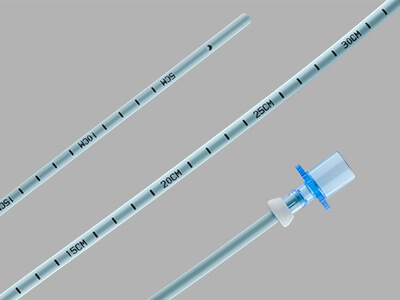 Used for assisted fibreoptic intubation and for uncomplicated, atraumatic endotracheal tube exchange.
Used for assisted fibreoptic intubation and for uncomplicated, atraumatic endotracheal tube exchange.
Features and benefits
• The catheter’s inner diameter (ID), lumen, and distal sideports are designed to enhance airflow.
• The large ID permits the use of a bronchoscope, which enhances visualisation.
• The removable Rapi-Fit adapters permit oxygen delivery, if necessary.
View more details about the Aintree Intubation Catheter with Rapi-Fit Adapters.
 Used to assist in the placement of an endotracheal tube during difficult or emergency airway access procedures where visualisation of the vocal cords is not possible secondary to secretions, blood, and/or anatomic anomalies.
Used to assist in the placement of an endotracheal tube during difficult or emergency airway access procedures where visualisation of the vocal cords is not possible secondary to secretions, blood, and/or anatomic anomalies.
Features and benefits
• Uses the Seldinger technique via the cricothyroid membrane for initial access permits retrograde (cephalad) placement of a wire guide that exits orally or nasally.
• The catheter’s tapered tip allows smoother navigation through the patient’s anatomy.
View more details about the Cook Retrograde Intubation Set.
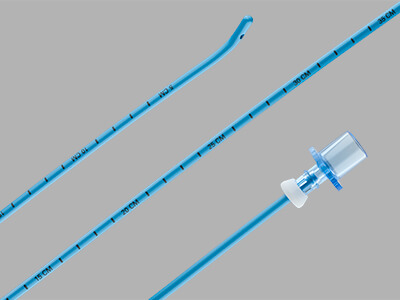 Used to facilitate endotracheal intubation in patients where the visualisation of the glottis is inadequate. The product has been designed for use by physicians trained and experienced in airway management techniques. Standard techniques for placement of intubation catheters should be employed.
Used to facilitate endotracheal intubation in patients where the visualisation of the glottis is inadequate. The product has been designed for use by physicians trained and experienced in airway management techniques. Standard techniques for placement of intubation catheters should be employed.
Features and benefits
• The blunt, angled tip can be passed blindly into the trachea when visualisation of the glottis is inadequate to guide the placement of the endotracheal tube.
• The optional stiffening cannula adds rigidity to the proximal and middle sections of the catheter, but the distal portion remains flexible.
View more details about the Frova Intubating Introducer.
Extubation
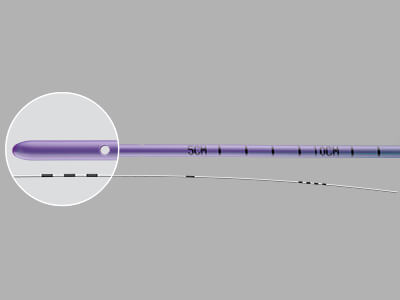 Used for staged extubation and subsequent reintubation.
Used for staged extubation and subsequent reintubation.
Features and benefits
• The soft, tapered, and kink-resistant wire is coated in a polymeric jacket to assure minimal irritation while in position.
• The staged reintubation catheter allows quick access and oxygen delivery to help stabilise the patient.
View more details about the Cook Staged Extubation Set.
Airway Exchange
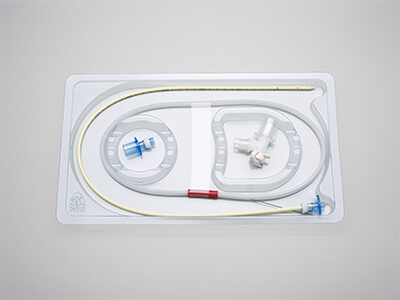 Used for the exchange of laryngeal mask airways and endotracheal tubes using a fibreoptic bronchoscope, bronchoscopic port, wire guide, and exchange catheter. The product may be used for emergency, urgent, and elective airway management. The removable Rapi-Fit Adapter permits use of ventilator device, if necessary, during exchange procedure.
Used for the exchange of laryngeal mask airways and endotracheal tubes using a fibreoptic bronchoscope, bronchoscopic port, wire guide, and exchange catheter. The product may be used for emergency, urgent, and elective airway management. The removable Rapi-Fit Adapter permits use of ventilator device, if necessary, during exchange procedure.
Features and benefits
• The use of a bronchoscope enhances visualisation to facilitate clearer navigation through the patient’s anatomy.
• The wire guide can be inserted through the working channel of the bronchoscope, which allows acute angles to be manoeuvred.
View more details about the Arndt Airway Exchange Catheter Set with Rapi-Fit Adapters.
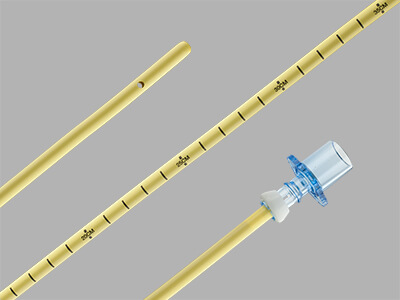 Used for uncomplicated, atraumatic endotracheal tube exchange.
Used for uncomplicated, atraumatic endotracheal tube exchange.
Features and benefits
• The blunt tip of the catheter is designed to be atraumatic to internal structures.
• The lumen and distal sideports are designed to deliver oxygen.
• The centimetre markings facilitate accurate alignment with endotracheal tubes.
View more details about the Cook Airway Exchange Catheter with Rapi-Fit Adapters.
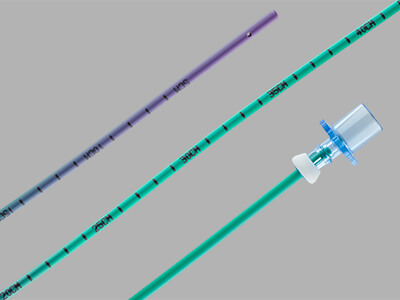 Used for uncomplicated, atraumatic endotracheal tube exchange.
Used for uncomplicated, atraumatic endotracheal tube exchange.
Features and benefits
• The blunt, soft, and flexible tip of the catheter is designed to be atraumatic to internal structures. The distal section of the catheter is flexible.
• The extra-firm catheter facilitates the exchange of double-lumen shaft tubes.
View more details about the Cook Airway Exchange Catheter – Double Lumen Extra Firm Soft Tipped.
Emergency Airway
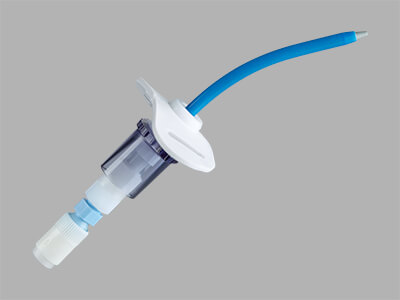 Used for emergency airway access when endotracheal intubation and/or ventilation cannot be performed. Airway access is achieved utilising percutaneous entry (Seldinger) technique via the cricothyroid membrane. Subsequent dilation of the tract and tracheal entrance site permits passage of the emergency airway catheter.
Used for emergency airway access when endotracheal intubation and/or ventilation cannot be performed. Airway access is achieved utilising percutaneous entry (Seldinger) technique via the cricothyroid membrane. Subsequent dilation of the tract and tracheal entrance site permits passage of the emergency airway catheter.
Features and benefits
• Airway access is achieved by using the Seldinger technique via the cricothyroid membrane.
• The subsequent dilation of the tract and tracheal entrance site permits the passage of the emergency airway.
View more details about the Arndt Emergency Cricothyrotomy Catheter Set.
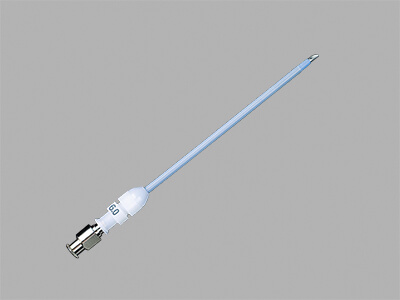 Used for emergency airway access when conventional endotracheal intubation cannot be performed.
Used for emergency airway access when conventional endotracheal intubation cannot be performed.
Features and benefits
• The catheter is made of reinforced coils to prevent kinking.
View more details about the Emergency Transtracheal Airway Catheter.
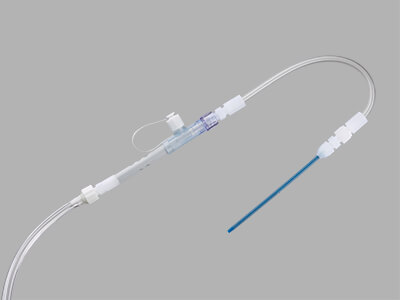 Used for emergency airway access when conventional endotracheal intubation cannot be performed. The Enk Oxygen Flow Modulator allows manually controlled oxygen flow and is intended for emergency transtracheal catheter ventilation when conventional ventilation by mask or endotracheal tube cannot be performed.
Used for emergency airway access when conventional endotracheal intubation cannot be performed. The Enk Oxygen Flow Modulator allows manually controlled oxygen flow and is intended for emergency transtracheal catheter ventilation when conventional ventilation by mask or endotracheal tube cannot be performed.
Features and benefits
• The set provides clinicians with a compact solution for quickly establishing an airway and using jet ventilation to stabilise a patient in an emergent situation.
• The wire-reinforced catheter is designed to resist kinking and to prevent the airway device from collapsing after it is placed.
View more details about the Enk Oxygen Flow Modulator Set.
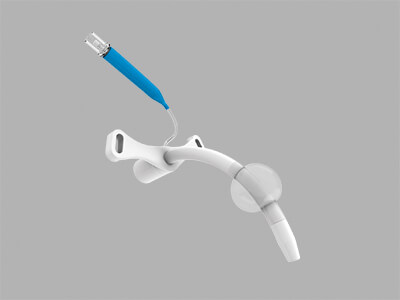 Used to establish emergency airway access when endotracheal intubation cannot be performed.
Used to establish emergency airway access when endotracheal intubation cannot be performed.
Features and benefits
• Airway access is achieved by using the Seldinger technique or the surgical technique via the cricothyroid membrane.
• The airway catheter is cuffed to protect and control the airway after it is placed.
View more details about the Melker Emergency Cricothyrotomy Catheter Set – Cuffed.
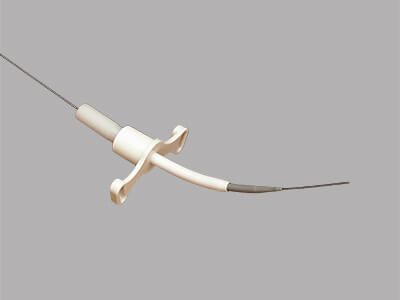 Used to establish emergency airway access when endotracheal intubation cannot be performed. Airway access is achieved using percutaneous entry (Seldinger) technique via the cricothyroid membrane. Subsequent dilation of the tract and tracheal entrance site permits passage of the emergency airway catheter.
Used to establish emergency airway access when endotracheal intubation cannot be performed. Airway access is achieved using percutaneous entry (Seldinger) technique via the cricothyroid membrane. Subsequent dilation of the tract and tracheal entrance site permits passage of the emergency airway catheter.
Features and benefits
• Airway access is achieved by using the Seldinger technique via the cricothyroid membrane.
• The uncuffed airway catheter comes in a variety of sizes.
View more details about the Melker Emergency Cricothyrotomy Catheter Set – Uncuffed.
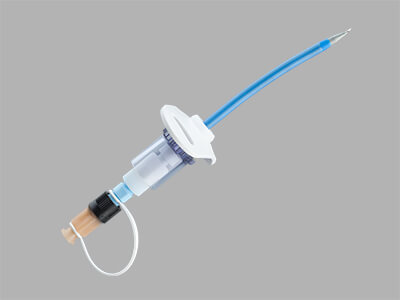 Used for emergency airway access when conventional endotracheal intubation cannot be performed.
Used for emergency airway access when conventional endotracheal intubation cannot be performed.
Features and benefits
• Airway access is achieved by using direct percutaneous puncture via the cricothyroid membrane.
• The catheter is kink-resistant, is made of reinforced coils, and has a standard 15 mm connector and Luer lock connecter to allow oxygen delivery.
View more details about the Patil Emergency Cricothyrotomy Catheter Set.
Accessories
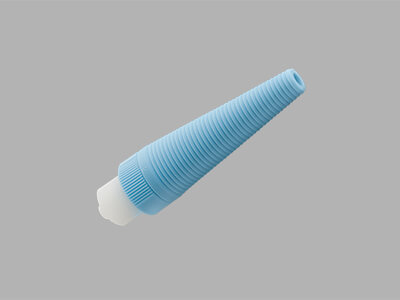 Used for catheter connections. The adapter is a male Luer lock to universal taper.
Used for catheter connections. The adapter is a male Luer lock to universal taper.
View more details about the Multipurpose Plastic Tubing Adapter.
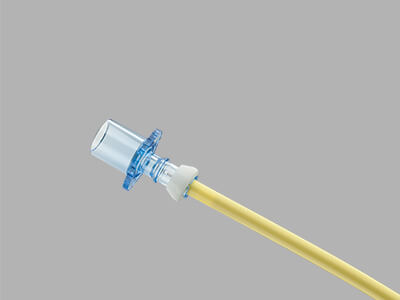 Intended for use with a Cook Airway Exchange Catheter (CAE Catheter). The French size indicated in the order number refers to the French size of the CAE Catheter.
Intended for use with a Cook Airway Exchange Catheter (CAE Catheter). The French size indicated in the order number refers to the French size of the CAE Catheter.
The Rapi-Fit adapter with 15 mm connector permits the use of a ventilator device for oxygenation during exchange procedures, and the Multipurpose Tubing adapter has been designed for suction.
The product is intended for use by physicians trained and experienced in diagnostic and interventional techniques. Standard endotracheal techniques should be employed.
Features and benefits
• Allows our airway catheters to be attached to a ventilatory device to provide oxygenation during intubation, exchange, or extubation procedures, if necessary.
View more details about the Rapi-Fit Adapter.
At Cook, we were among the first to recognise the clinical impact of EBUS procedures. That’s why we focussed our expertise as market leaders in ultrasound needles to create a full range of EchoTip® EBUS needles to meet your sampling needs. Now, you can potentially achieve cytology and histology in your EBUS procedures, even in the challenging pulmonary hilar region. Our goal is simple: to give you the cytological and histological information to help you deliver the best patient care.
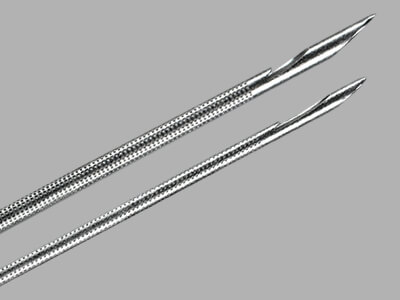 The EchoTip ProCore needle is used with the Olympus® ultrasound endoscope for fine needle biopsy of submucosal and extramural lesions within or adjacent to the tracheobronchial tree or gastrointestinal tract.
The EchoTip ProCore needle is used with the Olympus® ultrasound endoscope for fine needle biopsy of submucosal and extramural lesions within or adjacent to the tracheobronchial tree or gastrointestinal tract.
The EchoTip ProCore needle is used with the Pentax® ultrasound endoscope for fine needle biopsy of submucosal and extramural lesions within or adjacent to the tracheobronchial tree.
Features and benefits
• The needle features a core trap designed for receiving tissue in the delicate pulmonary area.
• The needle has a high-definition dimpling pattern for needle visibility.
• The 5 cm long needle extension presents a large diagnostic reach.
• The naturally contoured handle offers needle control and stability.
• The device has an adjustable sheath length.
• On scopes with metal Luer hubs, the removable sheath adjuster allows direct connection to the scope.
• On scopes with metal non-Luer hubs, the sturdy scope adapter design allows secure connection, procedural stability, and suction and injection capability due to the airtight valve.
View more details about the EchoTip ProCore Endobronchial HD Ultrasound Biopsy Needle.
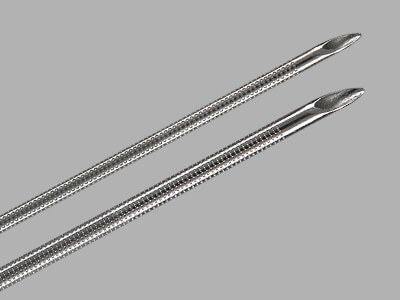 The EchoTip Ultra needle is used with the Olympus ultrasound endoscope for fine needle aspiration of submucosal and extramural lesions within or adjacent to the tracheobronchial tree or gastrointestinal tract.
The EchoTip Ultra needle is used with the Olympus ultrasound endoscope for fine needle aspiration of submucosal and extramural lesions within or adjacent to the tracheobronchial tree or gastrointestinal tract.
The EchoTip Ultra needle is used with the Pentax ultrasound endoscope for fine needle aspirationof submucosal and extramural lesions within or adjacent to the tracheobronchial tree.
Features and benefits
• The needle has a high-definition dimpling pattern for needle visibility.
• The naturally contoured handle offers needle control and stability.
• On scopes with metal Luer hubs, the removable sheath adjuster allows direct connection to the scope.
• On scopes with metal non-Luer hubs, the sturdy scope adapter design allows secure connection, procedural stability, and suction and injection capability due to the airtight valve.
• Integrated sheath adjuster offers compatibility with a full range of ultrasound endoscopes.
View more details about the EchoTip Ultra Endobronchial HD Ultrasound Needle.
Olympus is a registered trademark of Olympus Corporation.
Pentax is a registered trademark of Hoya Corporation.
Our endobronchial blocker allows one-lung ventilation through a conventional single-lumen endotracheal tube that is easier to place and poses a lower risk of trauma to internal structures than a double-lumen tube.1 View the Arndt Endobronchial Blocker’s indications for use, specifications, components, and other resources by clicking the links below.
 Intended to differentially intubate a patient’s bronchus in order to isolate the left or right lung for procedures that require one-lung ventilation. The product is intended for use by physicians trained and experienced in the use of fibreoptic bronchoscopes and airway anatomy. Standard techniques for use of fibreoptic bronchoscopes and endobronchial blockers should be employed.
Intended to differentially intubate a patient’s bronchus in order to isolate the left or right lung for procedures that require one-lung ventilation. The product is intended for use by physicians trained and experienced in the use of fibreoptic bronchoscopes and airway anatomy. Standard techniques for use of fibreoptic bronchoscopes and endobronchial blockers should be employed.
Features and benefits
• The low-pressure, high-volume balloon creates excellent surface area contact with the inner bronchial wall while minimising potential trauma to the bronchus.
• The adjustable guide loop is coupled with an appropriately sized bronchoscope to enable precise placement.
Citations
- Knoll H, Ziegeler S, Schreiber JU, et al. Airway injuries after one-lung ventilation: a comparison between double-lumen tube and endobronchial blocker: a randomized, prospective, controlled trial. Anesthesiology. 2006;105(3):471-477.
 Agnieszka joined Cook Medical as the only current Critical Care (CC) sales representative in Poland in October 2016. She holds a degree in public health and a postgraduate degree in medical business management from the Medical University of Warsaw and the Warsaw School of Economics, respectively.
Agnieszka joined Cook Medical as the only current Critical Care (CC) sales representative in Poland in October 2016. She holds a degree in public health and a postgraduate degree in medical business management from the Medical University of Warsaw and the Warsaw School of Economics, respectively. She said she mainly focuses on percutaneous tracheostomy, intubation, and extubation in her training workshops.
She said she mainly focuses on percutaneous tracheostomy, intubation, and extubation in her training workshops. Used for assisted fibreoptic intubation and for uncomplicated, atraumatic endotracheal tube exchange.
Used for assisted fibreoptic intubation and for uncomplicated, atraumatic endotracheal tube exchange. Used to assist in the placement of an endotracheal tube during difficult or emergency airway access procedures where visualisation of the vocal cords is not possible secondary to secretions, blood, and/or anatomic anomalies.
Used to assist in the placement of an endotracheal tube during difficult or emergency airway access procedures where visualisation of the vocal cords is not possible secondary to secretions, blood, and/or anatomic anomalies. Used to facilitate endotracheal intubation in patients where the visualisation of the glottis is inadequate. The product has been designed for use by physicians trained and experienced in airway management techniques. Standard techniques for placement of intubation catheters should be employed.
Used to facilitate endotracheal intubation in patients where the visualisation of the glottis is inadequate. The product has been designed for use by physicians trained and experienced in airway management techniques. Standard techniques for placement of intubation catheters should be employed. Used for staged extubation and subsequent reintubation.
Used for staged extubation and subsequent reintubation. Used for the exchange of laryngeal mask airways and endotracheal tubes using a fibreoptic bronchoscope, bronchoscopic port, wire guide, and exchange catheter. The product may be used for emergency, urgent, and elective airway management. The removable Rapi-Fit Adapter permits use of ventilator device, if necessary, during exchange procedure.
Used for the exchange of laryngeal mask airways and endotracheal tubes using a fibreoptic bronchoscope, bronchoscopic port, wire guide, and exchange catheter. The product may be used for emergency, urgent, and elective airway management. The removable Rapi-Fit Adapter permits use of ventilator device, if necessary, during exchange procedure. Used for uncomplicated, atraumatic endotracheal tube exchange.
Used for uncomplicated, atraumatic endotracheal tube exchange. Used for uncomplicated, atraumatic endotracheal tube exchange.
Used for uncomplicated, atraumatic endotracheal tube exchange. Used for emergency airway access when endotracheal intubation and/or ventilation cannot be performed. Airway access is achieved utilising percutaneous entry (Seldinger) technique via the cricothyroid membrane. Subsequent dilation of the tract and tracheal entrance site permits passage of the emergency airway catheter.
Used for emergency airway access when endotracheal intubation and/or ventilation cannot be performed. Airway access is achieved utilising percutaneous entry (Seldinger) technique via the cricothyroid membrane. Subsequent dilation of the tract and tracheal entrance site permits passage of the emergency airway catheter. Used for emergency airway access when conventional endotracheal intubation cannot be performed.
Used for emergency airway access when conventional endotracheal intubation cannot be performed. Used for emergency airway access when conventional endotracheal intubation cannot be performed. The Enk Oxygen Flow Modulator allows manually controlled oxygen flow and is intended for emergency transtracheal catheter ventilation when conventional ventilation by mask or endotracheal tube cannot be performed.
Used for emergency airway access when conventional endotracheal intubation cannot be performed. The Enk Oxygen Flow Modulator allows manually controlled oxygen flow and is intended for emergency transtracheal catheter ventilation when conventional ventilation by mask or endotracheal tube cannot be performed. Used to establish emergency airway access when endotracheal intubation cannot be performed.
Used to establish emergency airway access when endotracheal intubation cannot be performed. Used to establish emergency airway access when endotracheal intubation cannot be performed. Airway access is achieved using percutaneous entry (Seldinger) technique via the cricothyroid membrane. Subsequent dilation of the tract and tracheal entrance site permits passage of the emergency airway catheter.
Used to establish emergency airway access when endotracheal intubation cannot be performed. Airway access is achieved using percutaneous entry (Seldinger) technique via the cricothyroid membrane. Subsequent dilation of the tract and tracheal entrance site permits passage of the emergency airway catheter. Used for emergency airway access when conventional endotracheal intubation cannot be performed.
Used for emergency airway access when conventional endotracheal intubation cannot be performed. Used for catheter connections. The adapter is a male Luer lock to universal taper.
Used for catheter connections. The adapter is a male Luer lock to universal taper. Intended for use with a Cook Airway Exchange Catheter (CAE Catheter). The French size indicated in the order number refers to the French size of the CAE Catheter.
Intended for use with a Cook Airway Exchange Catheter (CAE Catheter). The French size indicated in the order number refers to the French size of the CAE Catheter. The EchoTip ProCore needle is used with the Olympus® ultrasound endoscope for fine needle biopsy of submucosal and extramural lesions within or adjacent to the tracheobronchial tree or gastrointestinal tract.
The EchoTip ProCore needle is used with the Olympus® ultrasound endoscope for fine needle biopsy of submucosal and extramural lesions within or adjacent to the tracheobronchial tree or gastrointestinal tract. The EchoTip Ultra needle is used with the Olympus ultrasound endoscope for fine needle aspiration of submucosal and extramural lesions within or adjacent to the tracheobronchial tree or gastrointestinal tract.
The EchoTip Ultra needle is used with the Olympus ultrasound endoscope for fine needle aspiration of submucosal and extramural lesions within or adjacent to the tracheobronchial tree or gastrointestinal tract. Intended to differentially intubate a patient’s bronchus in order to isolate the left or right lung for procedures that require one-lung ventilation. The product is intended for use by physicians trained and experienced in the use of fibreoptic bronchoscopes and airway anatomy. Standard techniques for use of fibreoptic bronchoscopes and endobronchial blockers should be employed.
Intended to differentially intubate a patient’s bronchus in order to isolate the left or right lung for procedures that require one-lung ventilation. The product is intended for use by physicians trained and experienced in the use of fibreoptic bronchoscopes and airway anatomy. Standard techniques for use of fibreoptic bronchoscopes and endobronchial blockers should be employed.